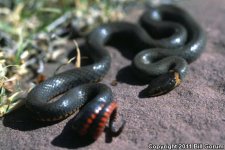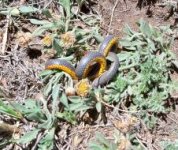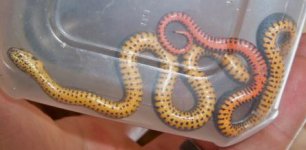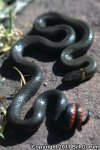| Range: |
 |
| Other Names: |
Arny's Ring-necked Snake, Red-bellied Snake, Punctated Viper Ring Snake, Ringneck Snake, Western Ring-necked Snake |
| Description: |
Small (10-14 inches long) gray snake with a ring of yellowish orange around its neck. The belly is usually the same color as the ring and gets redder toward the tail. The belly has a double or triple row of half-moon shaped black spots. |
| Venom: |
Rear-fanged, not considered dangerous to humans. Nicolette Emms was bitten by one and her finger turned red and swelled slightly. She had mild pain for less than a day. |
| Habitat: |
This species prefers to live on rocky, wooded hillsides, but it can be found in native prairies, pastures, grasslands, edges of woodlands, and on dry, rocky glades. Secretive, they often use flat rocks, boards, logs, or bark slabs for shelter. Instead of regulating their body temperature by basking in the sun on top of rocks, they rest beneath sun-warmed rocks. In the hottest part of summer, they seek cooler temperatures by taking shelter in the soil. |
| Behavior: |
Spend most of their time underground. When agitated, they frequently curl up their tail and expose the red underside |
| Hibernation: |
Overwintering retreats include burrows of other animals and deep crevices in rock outcrops. |
| Reproduction: |
Breeding occurs soon after emergence from overwintering, in late March or early April. Egg-laying takes place from late June through early July. Females lay 1-10 eggs, averaging 4 per clutch. There is evidence that this species may nest communally. Eggs are laid in abandoned small mammal burrows or under large flat rocks. The young hatch in late August or early September. The hatchlings are about 4 inches long. |
| Diet: |
earthworms and other small invertabrates |
Sources:

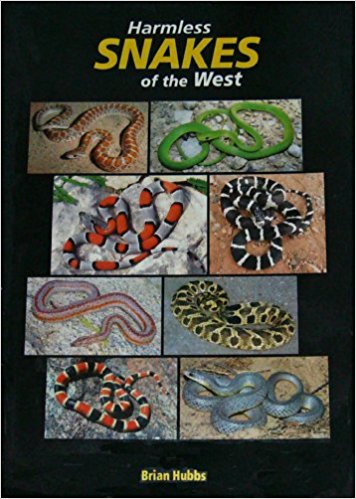
|

